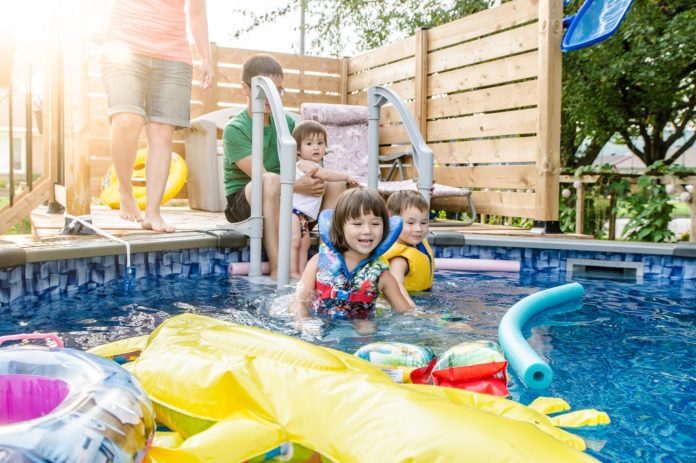Summer is finally here and it’s time to spend some time in the water cooling off, whether it’s at the pool, lake, or beach. As we’re enjoying this weather near the water, injuries are not the first thing many people think of, but they should be. It is important to make sure that you, your family, and your friends are staying safe in the water and not increasing your risk of drowning.
You may be thinking, “This won’t happen to me,” or “I know how to swim, I’ll be fine.” While you or others may be excellent swimmers, it only takes a few seconds for an individual to drown. It is important to confirm that everyone in the group has basic swimming skills and to have a designated supervisor while at any body of water, especially if there is not a lifeguard on duty.
Who Is at Risk of Drowning?
There are many factors that may increase a person’s risk of drowning. Here are the five most common risk factors, as outlined by the CDC.
- Swimming Ability: There are many adults and adolescents who lack swimming ability but still enjoy being near the water. Not being able to swim makes drowning an unfortunate but more likely reality.
- Barriers: Without fencing, or other barriers to bodies of water, children may wander into a pool area and could fall into the water.
- Supervision: Drowning may take place quickly and quietly anywhere that there is water. It’s important to pay attention constantly to people around any body of water.
- Location: Depending on the age of the individual, the likelihood of drowning may change with the location. For example, children under four have a higher likelihood to drown in home swimming pools, while those 15 and older tend to drown in natural water settings.
- Alcohol: The use of alcoholic substances is involved in nearly 25% of Emergency Department visits due to drowning and 70% of deaths due to recreational use of water.
What Are Some Tips To Keep Drowning from Happening?
- Learn CPR: Mere seconds can be the difference between greatly improving and influencing the outcome of a drowning incident.
- Always swim with a buddy!
- “Water wings” and other toys designed for water are no substitute for a life jacket. Wearing one greatly reduces the risk of drowning.
- If you are going to the beach, know what each of the different colored flags indicates (these may vary by beach) and obey all warnings.
What To Do If Someone Is Drowning
- Use anything around you to try and bring the drowning victim in from the water without putting yourself at risk.
- Call others for help.
- Lay the victim on their back and move their head and chin backward to try and clear their airway.
- Pinch their nose as their head is tilted backward and breathe into their mouth with yours to function as a rescue breath.
- After five rescue breaths, begin performing CPR.
- After performing CPR for at least one minute, and if no one around you has already called 9-1-1, do so.
- Continue performing CPR until the ambulance arrives.
What Is Dry Drowning?
“Dry drowning” or “secondary drowning” is when a serious amount of deterioration takes place after nearly drowning and also after a period of appearing relatively fine. This is when an individual essentially inhales water through the nose and/or mouth. The water provokes a spasm that impacts breathing, by slowly closing the airway (this is different from drinking a lot of water, as the process the body uses to absorb it is different).
Symptoms of Dry Drowning
Although symptoms of dry drowning typically occur after a water incident, symptoms can also appear up to 24 hours after a near-drowning experience. It is important to watch for these signs:
- Trouble breathing
- Cold or bluish skin
- Chest pain
- Abdominal swelling
- Vomiting
Get Emergency Care
If an individual is coughing profusely, sputtering, and showing other signs of respiratory distress as listed above, it is best to contact your health care professional, call 9-1-1 or go to an emergency department immediately.
Know Where to Go
Knowing where to go when you’re ill makes a big difference. But it can get confusing. Know where to go to get the right care at the right time. Your primary care doctor knows your medical history best, but the Emory Healthcare Network includes more than 3,450 physicians in over 70 specialties, 425 locations and 11 hospitals, as well as primary care offices, urgent cares, MinuteClinics, and 6 ERs throughout metro Atlanta. Get the care you need wherever you need it. See our map to find the locations closest to you.
Talk to Our Nurses
If you’re not sure if a trip to the ER is needed, call your family doctor or Emory HealthConnection, where our representatives or registered nurses can help you find a location or specialist that’s right for you. Call 404-778-7777: Monday – Friday, from 8 a.m. to 8 p.m. EST, Saturday from 8 a.m. – 5 p.m., and Sunday from 10 a.m. – 3 p.m.



